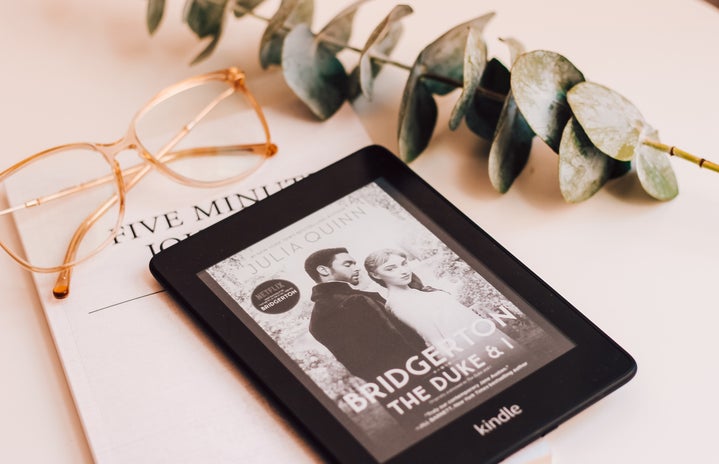If you’re on BookTok, then you’ve seen how popular Kindles are. While I love cracking open a paper book, I’ve considered trying e-books for years.
Over the summer, after much deliberation, I finally caved and purchased the Kindle Paperwhite.
Here are some things you should consider if you’re thinking about purchasing one for yourself.
Kindle Models
There are many Kindle models available, ranging in price and features. Amazon currently sells three main models: the Kindle, the Kindle Paperwhite and the Kindle Oasis.
The Kindle is the cheapest model at $99.99. It has a 6″ screen, 16GB of storage and none of the frills of the more expensive models.
The Kindle Paperwhite is slightly bigger at 6.8″ and pricier at $139.99. While it has only 8GB of storage, it is waterproof and has adjustable warm light for reading at night.
The Kindle Oasis is the priciest model at $249.99. It is also the largest Kindle at 7″ and features page turn buttons and free cellular connectivity, meaning you can download books on the go.
It is important to note that each model goes on sale multiple times a year. I got the newest version of the Kindle Paperwhite for $20 off right before Amazon Prime Day, so I recommend waiting for a sale before getting one.
Tablet or Kindle?
One of the biggest reasons I was hesitant to purchase a Kindle was because I already owned an iPad. I thought it was silly to have two similar devices, but there are some big differences between the two.
The Kindle is physically much lighter than a typical tablet, meaning you can hold it up with one hand. It’s also smaller, so you can fit it into your bag easily.
Kindles are also easier on your eyes, making it easier to read for longer periods of time. Smartphone and tablet screens shine light through the screen directly into your eyes. With the Kindle, the light is directed at the screen itself, resulting in less eye strain.
If you’re the type of reader that is easily distracted, having multiple apps on a tablet might be a hindrance to your reading. Having a separate device solely for reading might be useful to keep you on track.
How to Get Books
The price of the Kindle does not include any books, so it’s worth figuring out how you’re going to read books on it.
There are a few ways to get books onto your Kindle. The most obvious way is purchase and download e-books directly from Amazon. Books typically cost a few dollars and you have millions of options to choose from.
Kindle Unlimited is a monthly subscription that gives users access to millions of books for $11.99. This equates to around four e-books a month, so if you’re a fast reader, this might be worth it to you.
“Stuff Your Kindle Days” happen four times a year where you can download thousands of books to your Kindle (or preferred e-reader). Romance Bookworms and Cozy Mystery Book Club both host events where they compile lists of free e-books on Amazon that you can download. Taking advantage of these days can fill your Kindle without you having to pay anything.
If you don’t want to spend any money, there is a free way to get books: the Libby app.
With a library card, you can connect your account to the Libby app and have access to e-books through your library. These e-books are loaned for two or three weeks (depending on your library) to your Kindle.
Penn State students can apply for a library card at Schlow Centre Region Library, State College’s local library. You can also apply for one at your hometown’s library, meaning you have twice as many options when it comes to books.
How I use it
As someone who mostly reads at night, reading on a Kindle has been an absolute gamechanger. I can lay in bed without the lights on and not worry about eye strain.
The warm light feature is also super helpful. I have it set on a timer so that at a certain time my screen shifts to a warmer tone, which also helps reduces eye strain.
With the Kindle Paperwhite, I have 8GB of storage to save my books. While that may not sound like a lot, it equates to between 2000 and 3000 e-books.
I’m also saving money by not buying as many physical books. While I still do read the occasional paperback book, I’m finding myself gravitating towards using my Kindle because it’s so convenient.
I get nearly all my books from Libby from my hometown library. While I do have to occasionally wait for books to be available, I have access to thousands of books for free to keep me busy.
Is it Worth it?
After only four months with my Kindle, I would absolutely say it’s been worth it.
I read 28 books this summer on my Kindle, and it was nice not having to wait to go to the library or bookstore whenever I finished a book. I also prefer taking it while traveling and not worrying about packing several books whenever I go on vacation.
If you can buy one on a sale, I would definitely invest. You won’t be disappointed.


